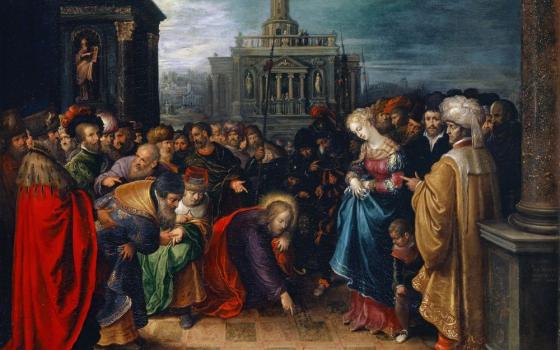
VATICAN CITY -- Christian history buffs have a lifetime of treasures to explore in Rome, including two new exhibits that opened Feb. 29 at the Vatican.
"Lux in Arcana" puts on display for the first time documents from the storied Vatican Secret Archive, including the records of Galileo Galilei's heresy trial and a letter to the pope signed by clergy and members of the English Parliament seeking an annulment for King Henry VIII so he could marry Anne Boleyn.
The second exhibition is dedicated to the Bible, and displays more than 150 rare biblical texts and artifacts. The exhibit features items from the private collection of the Green family, who own the Hobby Lobby craft store chain in the United States.
Items include the Codex Climaci Rescriptus -- a near-complete Bible from the sixth century with extensive passages in Jesus' native Aramaic -- and ancient pieces of papyrus that contain the earliest text of the Sermon on the Mountain.
According to organizers, the two exhibitions opening on the same day was mere coincidence. "Lux in Arcana" has been organized by the Vatican itself to mark the 400th anniversary of the creation of the Vatican Secret Archive by Pope Paul V.
The Green family's collection, Verbum Domini, is hosted by the Braccio di Carlo Magno, a Vatican event venue right on St. Peter's Square.
The Vatican's heavily guarded vaults have played a prominent role in Dan Brown's novels. Inaugurating "Lux in Arcana," Cardinal Tarcisio Bertone, the Vatican secretary of state, said he hoped that putting the Vatican collection on public view would dispel its "pseudo-historical novelistic ambience."
As the Vatican archivist, Bishop Sergio Pagano, explained, "Secret Archive" should in fact be translated from Latin as "Private Archive," because it originally housed the pope's private archive.
In a statement, the exhibition's organizers stressed that "Lux in Arcana" will be "the first and possibly the only time in history that (documents) leave the confines of the Vatican City walls."
Archivist Pier Paolo Piergentili said the exhibit also aims to "physically show the sources of history, and make available the documents that have created history in Europe, and not only Europe."
Among the items on display is a 15th-century edict by Pope Alexander VI that divided the New World between Spain and Portugal after Columbus' discovery of America, and a letter on silk by a 17th-century Chinese empress who had converted to Catholicism.
Visitors will also be able to see a letter written on birch bark from the chief of a Native American tribe to Pope Leo XIII, and a letter written by Marie Antoinette while she was imprisoned during the French Revolution.
American archaeologist Scott Carroll, curator of "Verbum Domini" said the main goal of his exhibit is to dispel the common misconception that the Bible is a book that "divides people that have different religious faiths."
According to Carroll, the story of the diverse items on display shows that biblical texts were written, preserved and disseminated by groups that, despite having different creeds, had "very close connections in their work and study."
Carroll said displaying early bilingual versions of the Bible in Arabic and Latin and early English translations will highlight the unique role the Bible played in the world's cultural history.
"I hope that someone who is skeptical will at least be open-minded and see that, as an intellectual, you have to know something about the Bible and its history," Carroll said.
"Lux in Arcana" runs in Rome until Sept. 9; "Verbum Domini" will be open at the Vatican until April 15.



